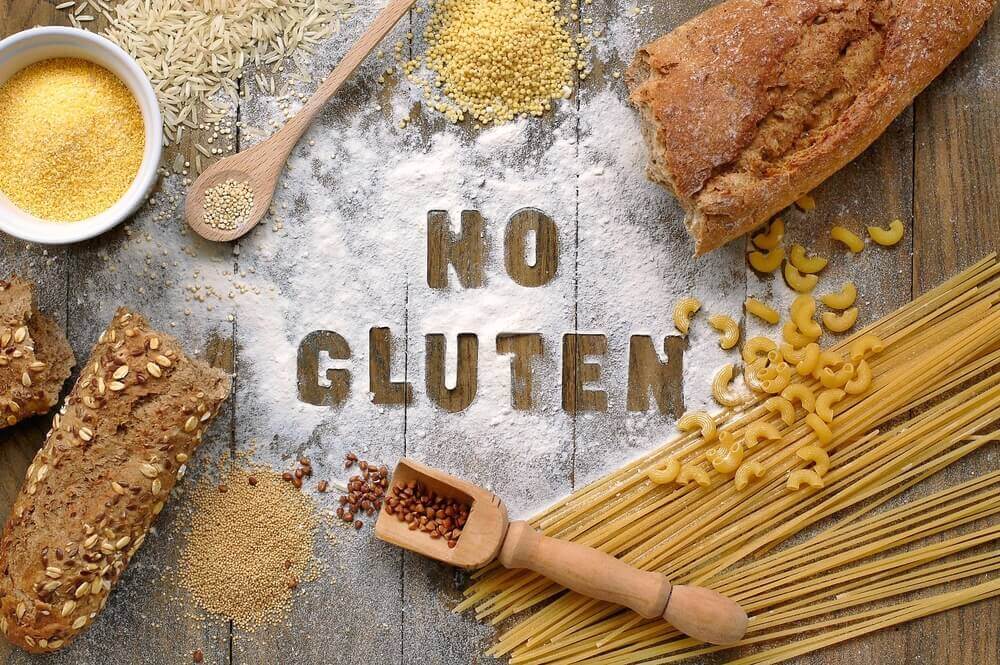What Does a Healthy Gluten-Free Diet Look Like?


Written and verified by the nutritionist Minerva Camero Albella
Have you ever wondered what a healthy gluten-free diet looks like? First of all, you must understand that there’s no need to eliminate gluten from your diet if you don’t have any disease that prevents you from consuming it. Deciding to eat gluten-free doesn’t mean that you’re eating healthier.
As some research highlights, eliminating cereals containing gluten from the diet may be harmful to the normal intestinal flora of healthy adults. Now, having cleared that up, do you want to know what to eat to get a healthy gluten-free diet? Let’s do it!
A healthy gluten-free diet: what you need to know
The most important aspect in any type of diet, including the healthy gluten-free diet, is to respect the basic principles of nutrition that are:
- Quantity: the diet must cover daily energy needs.
- Quality: it must be complete and provide you with all the nutrients.
- Harmony: the relationship between the types of food must be proportional to your need.
- Appropriate selection: the food must be properly selected and the way it’s prepared.
Don’t miss out: Healthy and Light Dinners to Help Lose Weight

What foods should I exclude in order to have a gluten-free diet?
It’s very simple, you should avoid or exclude all foods containing wheat, barley, rye or even oats in some cases. For more information, you can refer to this chart published by the Coeliac Association of Catalonia.
Something that everyone should take into account is to check the list of ingredients of the food before buying it. Although some ignore it, there are foods that apparently don’t contain gluten, but use gluten as an extra in their manufacturing process.
It can occur, for example, in processed meat or deli products. A processed food can contain gluten:
- As an ingredient in its preparation. Either wheat, barley, rye or its derivatives.
- As hidden gluten. An additive containing gluten that isn’t declared.
- Cross contamination. By the involuntary introduction of gluten to a food naturally lacking in it or processed as “gluten-free”.

What foods are healthy and gluten-free?
There’s a great variety of foods that you can eat. The most important thing is to respect the concept of a healthy and balanced diet, that is, without excluding any of the main groups of nutrients. Actually, our first and most important tip is to visit a nutritionist to evaluate if these types of diets are right for you.
What’s clear is that you have to restrict the consumption of ultra-processed products, whether they have gluten or not. This type of food is rich in trans fats, which negatively affect your health. Experts defend that these types of nutrients present an inflammatory character which can increase the risk of developing metabolic diseases.
Also read: Everything You Need to Know About Lactose Intolerance
Recommended foods
- All vegetables and fruits are an excellent choice. In fact, vegetable consumption is associated with a lower risk of cardiovascular problems, according to research published in the International Journal of Epidemiology.
- Beef, chicken, fish, rabbit and seafood.
- Corn-based cereals, corn flour, gluten-free pasta.
- Dairy and cheese. Consuming fermented dairy products is especially beneficial. Scientific studies support the intake of yogurts and kefir with the aim of reducing intestinal problems.
- Healthy fats such as avocado, olive oil, and nuts.
You can have a totally varied and healthy diet if you choose to eat gluten-free. Nowadays, there are many options to eat delicious, gluten-free meals and snacks.
If you’re going to eat out, be sure to inform the restaurant that you’re sensitive to gluten. This way, you can avoid any risk of cross-contamination when they prepare the meal.
You should also look at the labels before buying a certain product. This way, you’ll know if it’s certified gluten-free or if, on the contrary, it may have traces of the protein in its composition. This last detail is extremely important if you must avoid gluten due to medical issues.
It’s possible to eat varied gluten-free foods
In short, you should keep in mind that it’s not a matter of eating a healthy gluten-free diet out of fashion. In fact, this decision could have negative health consequences, for example, generating an intolerance to this protein in the medium term.
Although this type of diet has shown benefits for weight control and some conditions, it’s not the most indicated for people who aren’t intolerant or coeliac. Therefore, it’s better to consult a nutritionist before making any drastic changes to your diet.
All cited sources were thoroughly reviewed by our team to ensure their quality, reliability, currency, and validity. The bibliography of this article was considered reliable and of academic or scientific accuracy.
- Aune D., Giovannucci E., Boffetta P., Fadness LT., et al., Fruit and vegetable intake and the risk of cardiovascular diseasae, total cancer and all cause mortality a systematic review and dose response meta analysis of prospective studies. Int J Epidemiol, 2017. 46: 1029-1056.
- Plaza Díaz J., Ruiz Ojeda FJ., Vilchez Padial LM., Gil A., Evidence of the anti inflammatory effects of probiotics and symbiotics in intestinal chronic diseases. Nutrients, 2017.
- Souza RJ., Mente A., Maroleanu A., Cozma AI., et al., Intake of saturated and trans unsaturated fatty acids and risk of all cause mortality, cardiovascular disease and type 2 diabetes: systematic review and meta analysis of observational studies. BMJ, 2015.
This text is provided for informational purposes only and does not replace consultation with a professional. If in doubt, consult your specialist.








